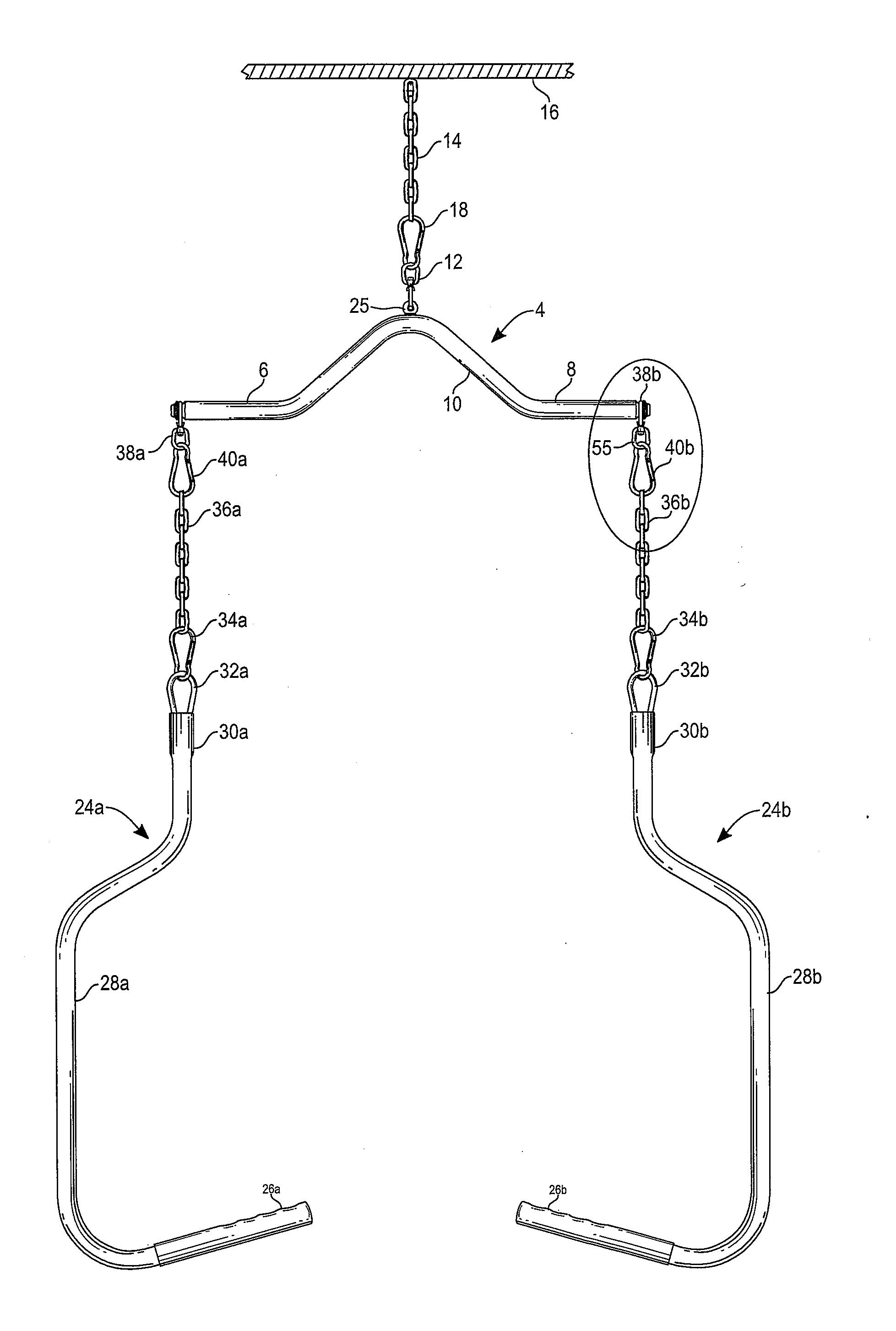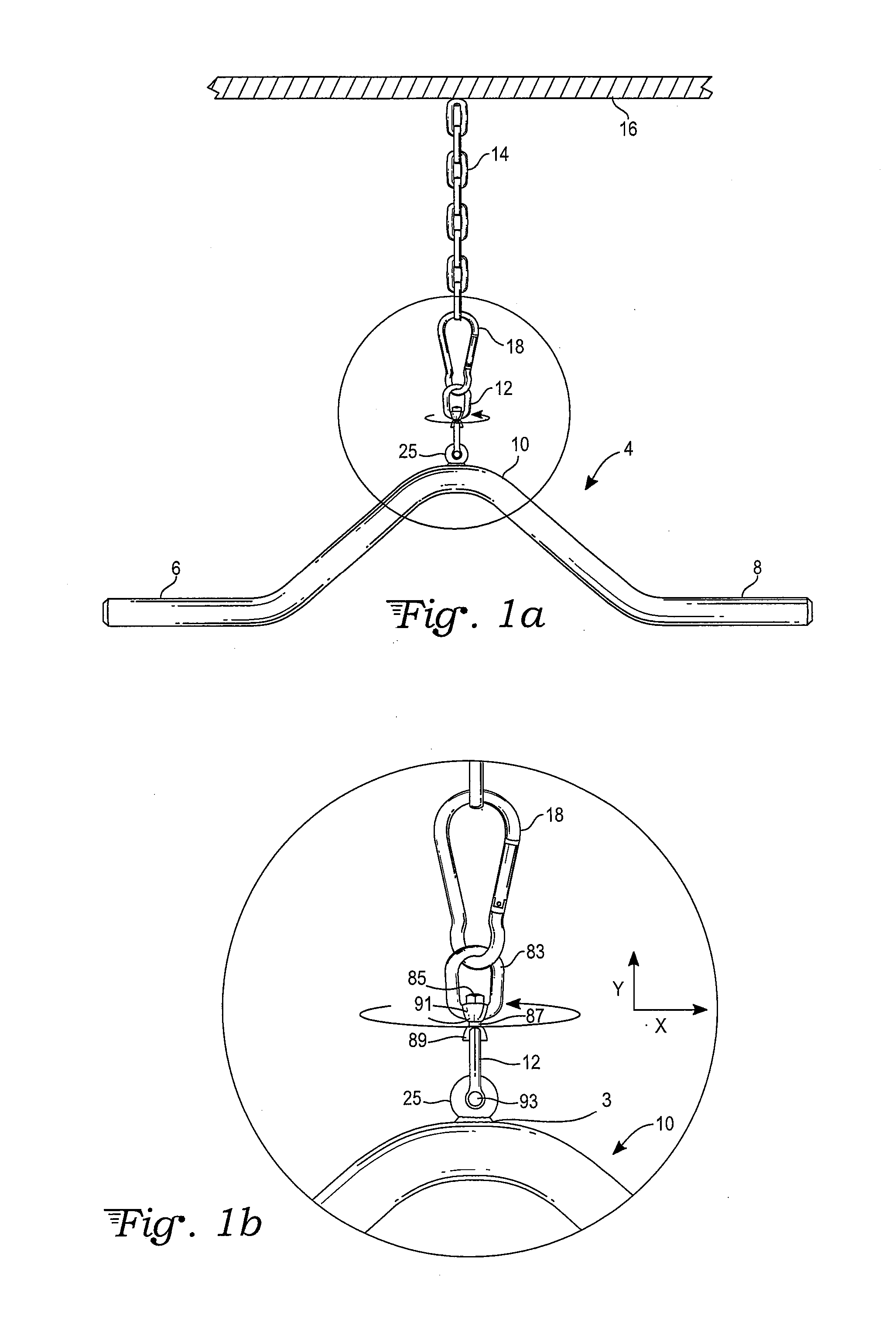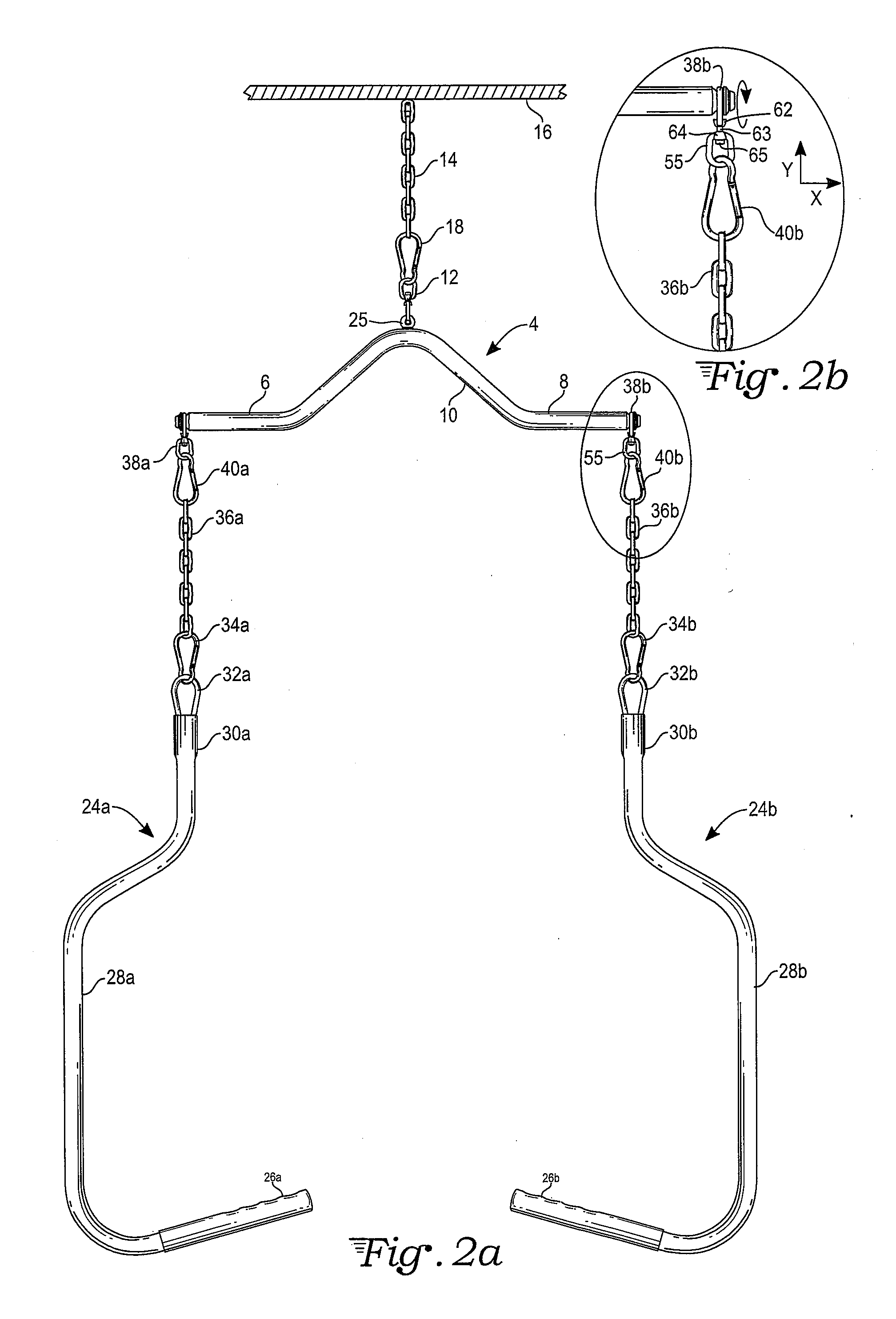Yoke training system
a training system and yoke technology, applied in the field of exercise equipment, can solve the problems of prior art training devices not providing users the opportunity to train in positions, athletes and non-athletes are still susceptible to injury, and achieve the effect of preventing or lessening the likelihood of injury and improving performan
- Summary
- Abstract
- Description
- Claims
- Application Information
AI Technical Summary
Benefits of technology
Problems solved by technology
Method used
Image
Examples
Embodiment Construction
[0021]With reference to FIGS. 1a and 1b, there is seen the yoke training system of the present invention featuring a yoke bar 4. The yoke bar may be comprised of aluminum or stainless steel or other desired material including manderal bent aluminum or stainless steel. In one embodiment, the yoke bar has a 1¼ inch diameter and a ¼ inch width. The yoke bar includes a left arm 6, a right arm 8 and an arched central yoke portion 10 having a peak 3. The left and right arms are typically of equal length. Central yoke portion 10 is attached to or integral with a ring 25 (strong enough to support user weight and, for example, made with stainless steel). Ring 25 extends upwardly from the yoke portion and typically from its peak 3. The ring is typically attached to or integral with a top surface of yoke portion 10 and is typically centered on the yoke portion 10. The ring is strong enough to support user weight and, for example, is made with stainless steel. Yoke bar 4 is suspended from an ov...
PUM
 Login to View More
Login to View More Abstract
Description
Claims
Application Information
 Login to View More
Login to View More - R&D
- Intellectual Property
- Life Sciences
- Materials
- Tech Scout
- Unparalleled Data Quality
- Higher Quality Content
- 60% Fewer Hallucinations
Browse by: Latest US Patents, China's latest patents, Technical Efficacy Thesaurus, Application Domain, Technology Topic, Popular Technical Reports.
© 2025 PatSnap. All rights reserved.Legal|Privacy policy|Modern Slavery Act Transparency Statement|Sitemap|About US| Contact US: help@patsnap.com



